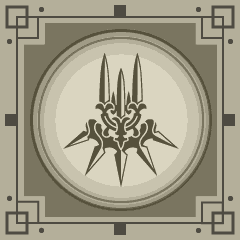Hiroshima: Hell on Earth
It’s been one whole month since my last article. I didn’t expect to be missing it, but it unexpectedly does feel great to be writing again.
I’ve visited the Hiroshima Peace Memorial Museum two weeks ago. It was emotionally intense, to say the least.
The permanent exhibition shows you the crude horror the Hiroshima inhabitants went through when the A-bomb exploded above the city on that cursed day of August 6, 1945, and during the following days, months, years and even decades following that disaster.
Japan had lost already and was but an agonizing and wounded prey when the US dropped Hell’s gate on Hiroshima. I dare not say that the blame falls solely on the US, as Japan’s stubborn and meaningless refusal to capitulate played a role in that decision. Nevertheless, contrary to the appeal of 70 scientists, including Leo Szilard — the man who, in 1939, asked President Roosevelt, through Albert Einstein, to start the development of an atomic weapon — not to use the atomic bomb without warning Japan, President Truman ultimately gave the authorization to unleash a fire which killed 70,000 people on the spot and a few hundred thousands more in the days after, from the consequences of their wounds or of the radiations.
I navigated along pictures of the direct aftermath of the explosion, exhibits of the victims' personal belongings and poignant testimonies from their relatives or sometimes from the survivors themselves. I found it a moral duty to read through them all, to immerse in their immeasurable pain and sorrow, for the Hiroshima disaster is the creation of all of humanity’s most inhumane instincts, united in a single, catastrophic burst of flames, bestiality and apathy. What you must know is that most of the citizens were engaged in building destruction work in order to prevent potential fires triggered by airstrikes from propagating and consuming the entire city. To that end, even elementary school students were involved. Almost all of the workers died instantly just after witnessing a flash of light above their heads. They probaby didn’t realize what was happening before they were blasted to oblivion, leaving behind charred statues, or mere cinders for those near the hypocenter.
Of all of those tragic stories, one particularly caught my eyes. It is the story of 木島和雄 (Kijima Kazuo), a 15-year-old high-school student who got his leg trapped under a beam of the burning Yokogawa Station. Kuraji Nishi, a police officer, tried to free him, to no avail. Here is the dialogue the police officer reported:
「助けられない、許してくれ」 (I can’t save you, please forgive me)
「ありがとうございました。これを宮島の家の者に渡して下さい」 (Thank you. Please give this [his pass case] to my family on Miyajima)
While reading this, I had to refrain a sob. Imagine it. The overflowing emotions of this scene. The powerlessness of the officer. The unfathomable acceptance of the young boy, who woke up that morning with a future, lost it in the blink of an eye, and yet did not succumb to rage or despair, but rather found peace with this injustice. I picture all too well the young man smiling softly to comfort the officer unable to save him, entrusting him with a memento of his existence, watching the back of the man leaving to carry his will to his dearest ones, and finally letting go. His tears flow from his eyes, and he waits. For the flames to burn him alive.
I am the same as this police officer. I am powerless before such horror. And yet, why is it that I find it so beautiful? How can such absurd, demonic disaster, make me feel such genuine emotions? Perhaps is it that humans' greatest traits can only ever be fully reckoned in the face of our lowest aspects themselves. Kijima Kazuo’s story is that of an ordinary young man who, confronted to the most despicable and evil deeds of mankind, answered with love for his closed ones, sympathy for the man who left him to die, and peace with himself.
I will be leaving you with a very relevant quote carved on the black marble slab of the Children’s Peace Monument build in honor of child victim 佐々木禎子 (Sasaki Sadako) who died of leukemia a decade after her exposition to the bombing, in 1955. She was suddenly diagnosed with the disease in 1954 and given one year to live. However, she managed to fold more than one thousand origami cranes before her death and became the symbol of all the victims of the atomic bombing. Her Wikipedia article is worth reading if you wish to learn more about her, and I strongly urge you to do so.
Here is the message from the monument.
これはぼくらの叫びです これは私たちの祈りです 世界に平和をきずくための
(Kore wa bokura no sakebi desu. Kore wa watashitachi no inori desu. Sekai ni heiwa o kizuku tame no).
“This is our cry, this is our prayer: for building peace in the world.”
May we find it in ourselves to uphold it.
